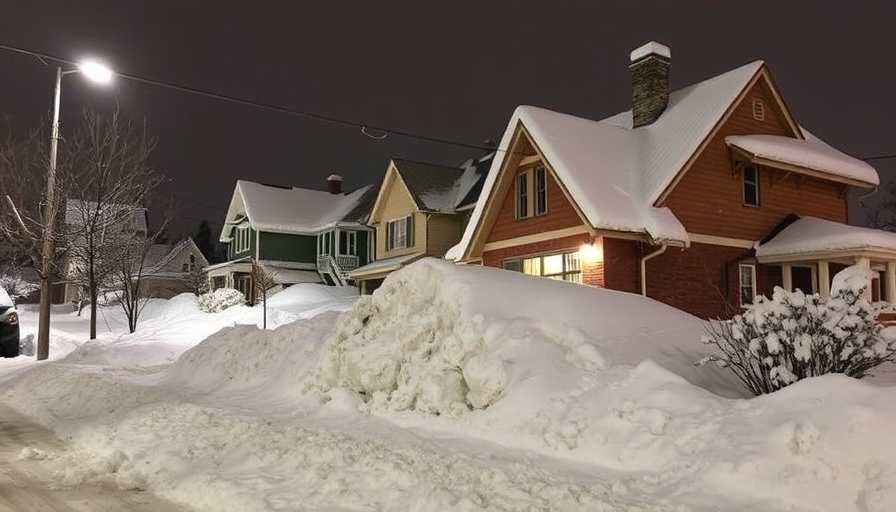
Understanding the Challenge: Damage from Heavy Snow
Heavy snowfall can lead to unexpected consequences for homeowners and businesses alike. This winter's snowstorms have illustrated just how significant the impact of snow can be on residential properties and infrastructure. From broken tree branches to collapsing roofs, the damage is often both visible and hidden. As climate patterns shift and extreme weather becomes more common, understanding these threats becomes a necessity for all.
Types of Damage: What Can Snow Cause?
One of the most common problems due to heavy snow is the weight it places on roofs. Snow can accumulate rapidly, exceeding what many structures were designed to handle. This excess weight can lead to structural failure and costly repairs. Additionally, ice dams can form along the edges of roofs, preventing proper drainage and causing water to seep into homes, leading to mold and water damage.
Snow Removal: Techniques and Best Practices
Proper snow removal techniques are crucial for minimizing damage. Residential homeowners should invest in quality snow shovels and consider snow blowers for larger areas. Using these tools effectively can help prevent ice buildup and alleviate weight on roofs. For many homeowners, hiring professional plowing and snow removal services is often the best choice to ensure safety and efficiency.
Economic Impacts: The Cost of Cleanup
The economic implications of heavy snow extend beyond immediate damage. Homeowners and businesses face not just the repair costs but also the loss of income due to disrupted services and repairs. For instance, retail businesses may suffer losses when inclement weather deters customers from visiting. It’s essential to consider these factors when preparing for winter weather.
Environmental Considerations: A Broader Perspective
The impact of snow isn't only confined to human structures. Ecosystems can be affected too. Heavy snowfall can disrupt local flora and fauna, particularly if snow cover persists for longer periods. Understanding these environmental connections can enhance a community's resilience to snow-related damage while promoting sustainability.
Preparing for the Future: Strategies for Homeowners
Homeowners can adopt various strategies to mitigate damage from heavy snow. This includes regular roof inspections, ensuring gutters are clear to facilitate drainage, and maintaining nearby trees to prevent branches from falling onto homes. Moreover, investing in snow guards and roof heating systems can significantly reduce the risks associated with heavy snow.
Conclusion: Stay Informed and Resilient
As our climate continues to change, winter storms may grow more severe. By understanding the effects of heavy snow, homeowners can take proactive steps to protect their properties. Preparing now not only ensures safety but can also minimize costly repairs down the line. Stay informed and make informed decisions about your winter preparedness!
 Add Row
Add Row  Add
Add 



Write A Comment